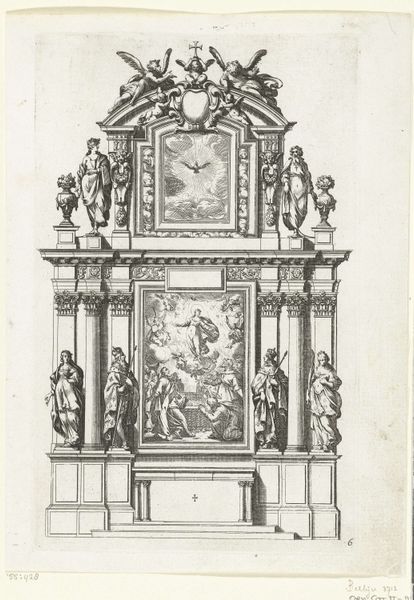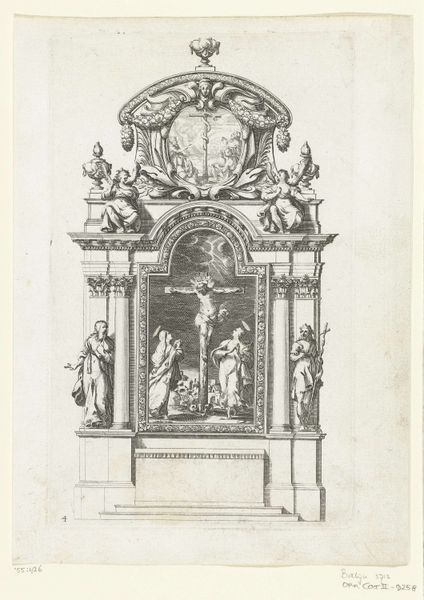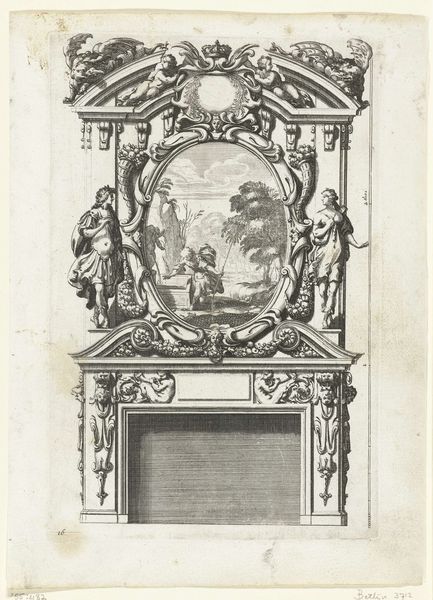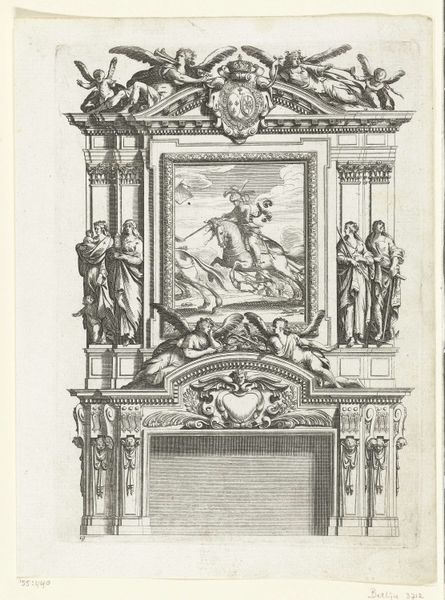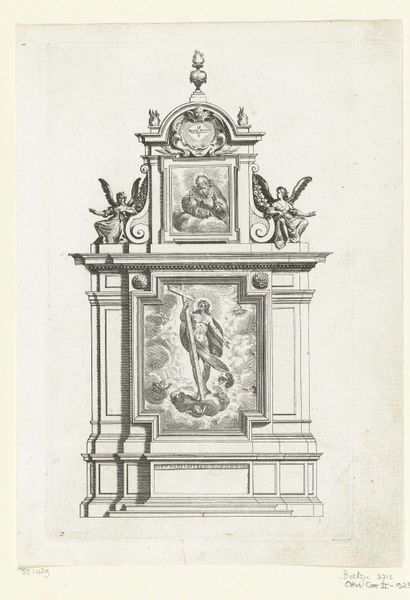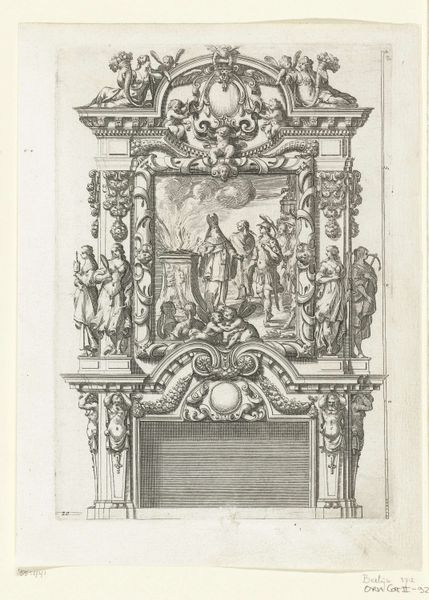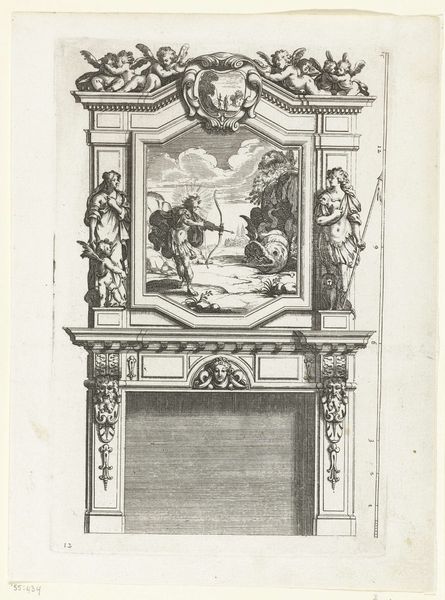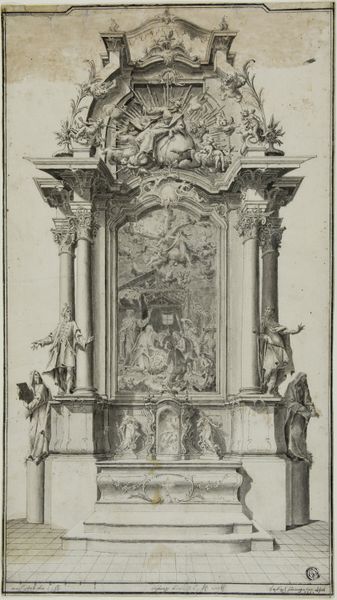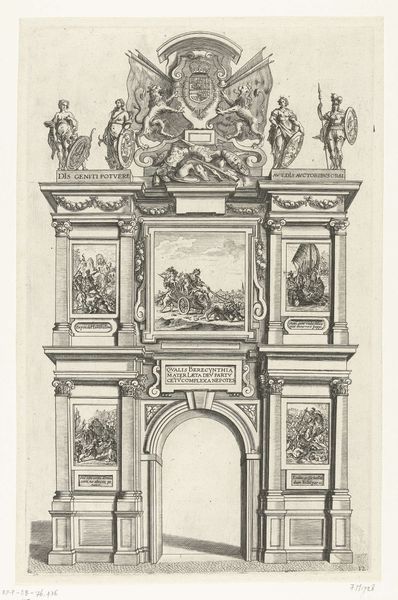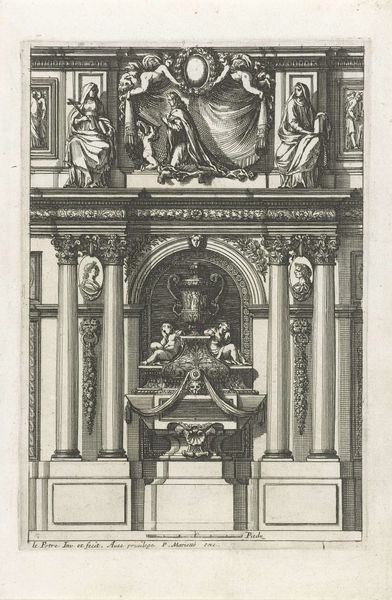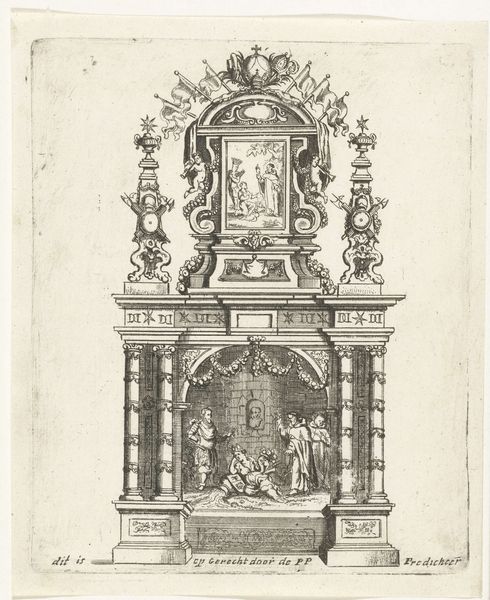
print, engraving
#
allegory
#
baroque
# print
#
old engraving style
#
figuration
#
history-painting
#
engraving
Dimensions: height 210 mm, width 140 mm
Copyright: Rijks Museum: Open Domain
Curator: I find myself strangely drawn to the symmetrical composition and ethereal light radiating from this engraving. It's by Abraham Bosse and is entitled, "Altar with the Resurrection of Christ." Created before 1643, it resides here in the Rijksmuseum. Editor: Yes, the first thing that strikes me is the way it visualizes power dynamics. It almost seems like an architectural rendering of an altarpiece, framing a violent spectacle. A very Baroque strategy. Curator: Indeed. Bosse expertly utilizes the symbolic language of Baroque art. Note the carefully placed angels, the robust columns, and the ornamentation, all meticulously rendered in the engraving. The image becomes a powerful statement on faith and divine authority. Editor: But who has access to this faith, and by whose authority are these scenes represented? Considering its historical context, the figures appear quite homogenous. And in terms of this visuality, this period further codified racial and gendered hierarchies through these visual means, no? Curator: Absolutely. The racial and gender dynamics are certainly implicit within the visual codes, a reminder that these symbols never exist in a vacuum. However, also note that the central panel showcases the moment of Christ's resurrection, surrounded by awestruck witnesses, a message about redemption. And higher above this panel you see a soaring bird that represents the flight of the human soul as well. Editor: That focus on redemption, I would say, really speaks to a very specific viewership – one that’s historically benefited from dominant structures. Still, it does serve as a compelling entry point to understand that the notion of hope, however fraught with power, isn’t without impact. Curator: It prompts us to reconsider what those enduring messages mean in the present moment. The symbolism resonates even as its cultural context continues to shift. Editor: Exactly, this highlights how symbols can hold diverse interpretations when viewed through the lens of social justice. Curator: Precisely, I leave with an renewed sense of the symbolic potency inherent within religious art, despite the cultural distance and inevitable biases. Editor: And for me, this engraving reinforces the continued relevance of dissecting art through a critical, historically informed lens, to reveal both its aesthetic strategies and embedded social narratives.
Comments
No comments
Be the first to comment and join the conversation on the ultimate creative platform.
